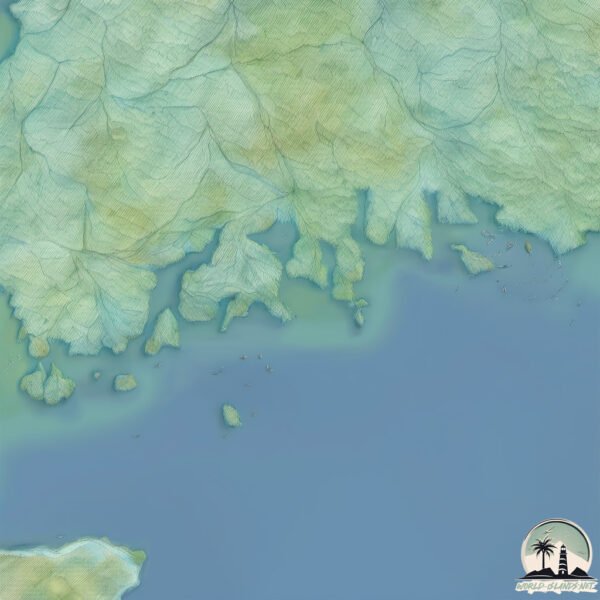Welcome to Sang-do , a Temperate island in the Japan Sea, part of the majestic Pacific Ocean. This guide offers a comprehensive overview of what makes Sang-do unique – from its geography and climate to its population, infrastructure, and beyond. Dive into the details:
Geography and size of Sang-do
Size: 11.1 km²Coastline: 20.7 kmOcean: Pacific OceanSea: Japan SeaContinent: Asia
Sang-do is a Medium Island spanning 11 km² with a coastline of 21 km.
Archipel: –
Tectonic Plate: Amur – A minor tectonic plate in the region of the Amur River at the border of Russia and China, involved in complex interactions with the Pacific and Eurasian plates.
The geographic heart of the island is pinpointed at these coordinates:
Climate and weather of Sang-do
Climate Zone: TemperateClimate Details: Monsoon-Influenced Humid Subtropical ClimateTemperature: Hot Summer
Climate Characteristics: Known for hot, humid summers with significant monsoon rains, contrasted by mild, drier winters.
Topography and nature of Sang-do
Timezone: UTC+09:00Timezone places: Asia/TokyoMax. Elevation: 245 m Mean Elevation: 102 mVegetation: Mixed ForestTree Coverage: 60%
The mean elevation is 102 m. The highest elevation on the island reaches approximately 245 meters above sea level. The island is characterized by Hills: Gently sloping landforms with rounded tops, having a maximum elevation between 200 and 500 meters. Hills contribute to a varied landscape on islands.
Dominating Vegetation: Mixed Forest
Vegetation: 7 vegetation zones – Very Highly Diverse Island
Infrastructure and Travelling to Sang-do
Does the island have a public airport? no .
Does the island have a major port? no .
The mean population of Sang-do is 508 per km². Sang-do is Densely Populated. The island belongs to South Korea .
Continuing your journey, Ha-do is the next notable island, situated merely km away.
DANGROUS ISLAND
https://merch.rickyberwick.com/ ---------------------------------------------------------------- i shouldn't have social media BUT.. • Twitter ...
Island Boys Get Caught Lacking with Jack Doherty
Island Boys Get Caught Lacking with Jack Doherty FOLLOW ME Instagram: ...
Island boys missing teeth
South Korea is classified as Emerging region: MIKT: Mexico, Indonesia, South Korea, and Turkey – Economies recognized for their development potential and emerging market status. The level of income is High income: OECD.
News – Latest Updates and Headlines from Sang-do
Stay informed with the most recent news and important headlines from Sang-do. Here’s a roundup of the latest developments.
Loading...
Please note: The data used here has been primarily extracted from satellite readings. Deviations from exact values may occur, particularly regarding the height of elevations and population density. Land area and coastline measurements refer to average values at mean high tide.

